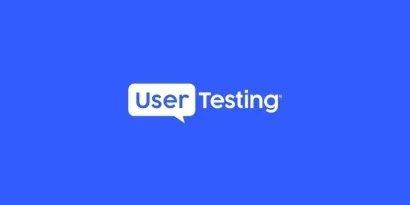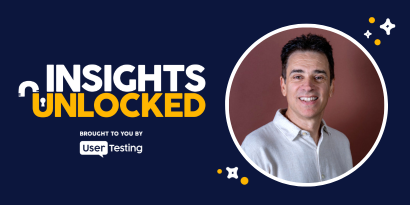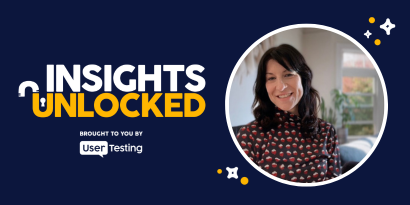
Episode 186 | September 01, 2025
Why neurodiversity in the workplace is a business advantage, not a compromise
Discover how Tara May and Aspiritech are redefining inclusion through neurodiversity in the workplace, and why kindness is a powerful business strategy.
Why neurodiversity in the workplace is a business advantage, not a compromise
When was the last time your workplace strategy accounted for how someone’s brain processes the world?
For most organizations, neurodiversity still falls into the category of “nice to have”—a side conversation about inclusion that rarely makes it into business KPIs. But Tara May, CEO of Aspiritech, is challenging that mindset by showing how neurodivergent employees can be a key driver of innovation, loyalty, and growth.
In a recent episode of Insights Unlocked, Tara joined host Lija Hogan to discuss what it takes to build a truly inclusive organization—and why being kind and empathetic is one of the smartest business strategies a company can adopt.
“You already have a neurodiverse team—whether you know it or not,” Tara said. “So why not support them in ways that help everyone succeed?”
Let’s explore what that support looks like and why embracing neurodiversity in the workplace is no longer optional—it's essential.
Rethinking inclusion: more than checkboxes
Too often, inclusion is reduced to a checklist—one-size-fits-all accommodations or annual training that’s quickly forgotten. Tara flips that model by encouraging leaders to start with a much simpler, more powerful question:
What do you need to be your best self at work?
That’s not just good human insight—it’s inclusive leadership in action.
Tara shared that more than 90% of Aspiritech’s employees are autistic. What started as a kitchen-table idea to help one family’s son find meaningful work has become a $6 million company delivering QA and user testing services to Fortune 500 companies.
And the secret? It's not in flashy benefits or sweeping DEI programs—it’s in building psychological safety and designing around how people actually function, not how we assume they should.
ON-DEMAND WEBINAR
Building high performance design teams that drive goal conversion rates
The ROI of kindness: a real-world business strategy
Let’s be honest: many executives hear “kindness” and think of soft skills or nice-to-have traits. Tara reframes it completely.
“I use the phrase ‘ROI of kindness’ on purpose,” she explained. “Because I want to juxtapose a hard-nosed business term like ‘return on investment’ with a word like kindness—and prove they belong together.”
At the speed of modern business—driven by AI, automation, and constant change—kindness isn’t fluff. It’s a framework for building resilient, innovative teams. Without empathy and psychological safety, transformation efforts often fall flat. People resist change not because they’re unwilling, but because they’re unsupported.
Inclusive leadership means meeting people where they are—and that starts by recognizing that different kinds of brains process change, stress, and collaboration in different ways.
Misconceptions about neurodivergent employees
One of the biggest roadblocks to inclusion is the misconception that working with autistic or otherwise neurodivergent individuals is somehow more difficult or unpredictable. Tara disagrees.
“It’s just like working with anyone else,” she said. “You’re going to see strengths, weaknesses, personalities—it’s all there.”
What is different, and what inclusive leaders must be aware of, is how to create space for people to succeed:
- Some individuals need written instructions rather than verbal ones
- Others may stim during meetings by tapping or using fidget tools—perfectly normal and often helpful
- Workspace setup (like avoiding someone walking behind a desk) can drastically affect focus and comfort
- Headphones or quiet spaces can make a world of difference
None of these adjustments are expensive. Most cost nothing but a little intention.
GUIDE
The executive's guide to empathy-driven ROI
Small shifts, big impacts
Tara shared a story that illustrates the power of simple, empathetic adjustments. One Aspiritech employee struggled with focus when people approached from behind. The solution? Move his desk against a wall. That one change helped him thrive.
This approach aligns with the principle of universal design—designing for the margins so everyone benefits. Much like how curb cuts help both wheelchair users and people with strollers, workplace accommodations for neurodivergent employees often help everyone.
At Aspiritech, the sensory room—intended for autistic team members—became a beloved escape for all employees. And movement breaks, often associated with classroom settings, provide adults with much-needed mental resets too.
As Tara puts it: “By thinking about neuro inclusion, you’re actually making your organization better for everybody.”
Why inclusive workplaces outperform
The business case for neurodiversity in the workplace isn’t just theoretical. Companies that build inclusive cultures see real, measurable results:
- Higher employee retention – Aspiritech’s employees are more loyal because their needs are acknowledged and respected
- Greater innovation – Diverse perspectives lead to outside-the-box thinking, essential in digital transformation and AI development
- Improved accessibility – Teams are more likely to consider user needs others might overlook
- Stronger culture – Psychological safety allows people to take risks, share ideas, and collaborate effectively
Inclusive leadership isn’t just a moral stance—it’s a competitive advantage.
Designing inclusive AI starts with who’s in the room
As AI becomes more embedded in how we design, communicate, and serve customers, Tara raised a crucial point: AI is only as inclusive as the data and people that shape it.
“AI is a reflection of the knowledge base we’ve already built,” she said. “And that base is biased unless we include neurodivergent voices in its creation.”
Aspiritech is currently building a large language model trained on its own body of neuroinclusive knowledge—ensuring AI tools reflect real, lived experience.
This is where product designers, researchers, and developers must be especially intentional. Inclusion isn’t just a backend consideration; it must be built into algorithms, interfaces, and user flows from the beginning.
How to get started with neuroinclusive practices
Tara offered a simple but powerful starting point for anyone looking to improve inclusion at work: Google it. Ask ChatGPT. Learn.
In other words, don’t wait for a massive initiative or formal program. Start small. Ask questions. Invite feedback. Build awareness and curiosity.
Here are a few practical ways to start today:
- Add a quiet room or wellness space in the office
- Normalize the use of noise-canceling headphones or movement breaks
- Ask team members how they learn best (written vs. verbal, live vs. asynchronous)
- Avoid assuming someone needs a diagnosis to request accommodations
- Use inclusive design principles when building AI or digital experiences
“In 15 years, our support team has never had a request they couldn’t accommodate with a little creativity,” Tara said. “Many of them are free and make the workplace better for everyone.”
Why this matters more than ever
Neurodiversity is deeply human. And being neurodivergent isn’t always fixed—it can be temporary, evolving, or situational.
Someone going through trauma, menopause, or high-stress environments may experience shifts in cognitive function that mirror neurodivergence. In emergencies, even the most “neurotypical” among us can struggle to process information.
That’s why inclusive design and empathetic leadership aren’t niche, they’re foundational.
As Tara noted, “Access to digital information is access to the world.” And it’s on all of us—leaders, designers, researchers, marketers—to ensure that access is open to everyone.
Closing thoughts
As organizations face growing pressure to innovate, scale, and adapt, the most forward-thinking companies are turning inward—toward their people—and asking better questions.
Supporting neurodiversity in the workplace isn’t a box to check. It’s a mindset. One rooted in kindness, shaped by listening, and powered by the belief that every brain has something valuable to offer.
Let’s give those brains the conditions they need to thrive.
“Cultural change doesn’t come from military-style leadership,” Tara said. “It comes from convincing your team that change is a good idea—and giving them the kindness to make it happen.”
Episode links:
- Tara May on LinkedIn
- Aspiritech website
- Designing for diverse audiences: this on-demand webinar explores strategies for crafting inclusive user design experiences that address the needs of varied audiences, including underrepresented groups, reflecting the theme of neuroinclusive design
- Diverse and inclusive perspectives template: a practical template that helps teams configure diverse audiences and recruit contributors using inclusive screening practices, supporting equitable representation in research
- AI’s influence on CX with Tabitha Dunn: this episode explores the intersection of empathy, inclusive transformation, and AI in customer experience, aligning with the guest’s emphasis on inclusive leadership as AI advances
- Diversity and inclusivity in user research: a blog post that defines and emphasizes the importance of diversity and inclusivity in UX research, echoing the episode’s core focus on inclusive practices and representation
PRODUCT TOUR
Inside the Human Insight Engine
See how top teams get fast, actionable insights in this 20 - 30 minute biweekly product tour, where each session highlights a unique real-world use case.









